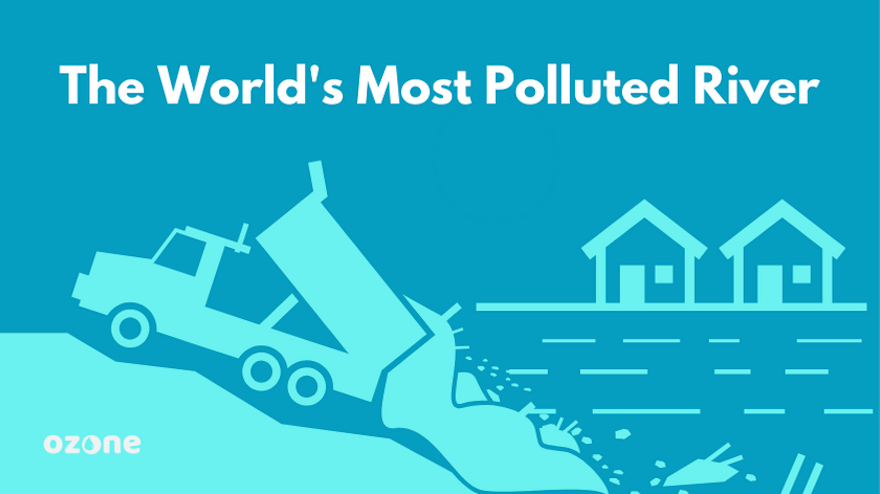The narrative of economic growth has been echoed for years in Indonesia. In fact, Indonesia’s efforts on sustaining its economic growth for more than fifteen years has had significant effects on the reduction of poverty and established a sizeable middle-class. Having said that, have you ever wondered what does it indirectly tell us about the environment? Let’s take one example - If we look at one of the longest and largest rivers in Indonesia, the Citarum river, it plays a vital role in the social and economic life of people living in West Java and Jakarta; it has been known as the world’s dirtiest river alongside with Sarno river in Italy and Ganges river in India. You may question what’s the correlation with economic growth?
We cannot close our eyes to the fact that environmental issues have become a major concern not only in Indonesia but also indeed for the world. Given the reality that large-scale pollution in the Citarum river has affected the health and wellbeing of the population living within the river basin, we may have assumed that they are far from a benevolent economic growth. The river has been polluted by textile waste dump by more than 2.000 factories (Leahy 2013) and up to 10 tons of household waste per day (Mangan 2014). A recent report also said that approximately 2,000 tons of plastic flow through the river every day (Pike 2018). Can you imagine that? It shows that the population living in that area would not be able to respond effectively to the environmental harm that has been haunting them due to the fact that the national economic boom has been overshadowed this tragic reality.
Sadly, people exposed to environmental damage are most likely not benefiting from a country’s economic growth. It is because they are not wealthy and powerful enough to afford a better living and avoid environmental harm caused by economic activities (Princen 1997, cited in Boyce 2007, p.8). As the Indonesian population increases steadily, the density of population has also increased significantly. Meanwhile, the data of West Java Province in 2016 confirms that there are still 300 companies dumping their waste in the river despite some legal framework limiting that had been in effect. As a community, poor people in the river basin have to compete with the increasing real estate market demand. So, who bears the cost of pollution? It is indeed obvious.
Therefore, pointing fingers to factories and market would not solve the problem. It is up to central authorities to provide some set of strict regulations and enforcement for whoever pollutes the river including factories and businesses and of course, hold them accountable. Other than that, government can also intervene by operating river and water management system in the polluted area. Indeed, providing access to a healthy and productive living as well as educating the disadvantaged community about the environment would be the suitable actions to take.
References
Boyce, James K. 2007, ‘Is inequality bad for the environment?’, Working Paper Series, no.135, pp. 1-15, Political Economy Research Institute, University of Massachusetts Amherst.
Citacitarum 2014, Citarum at glance: social and economic condition, Cita-citarum, <http://citarum.org/en/about-us/citarum-at-glance/social-economy.html>
Leahy, S 2013, ‘Toxic towns and poisoned rivers: a byproduct of industry for the rich’, The Guardian (online), 9 November, <https://www.theguardian.com/global development/2013/nov/08/toxic-towns-poisoned-rivers-byproduct-industry>.
Mangan, L 2014 ‘The World's Dirtiest river TV review: a visit to a paradise under threat’, The Guardian (online), 12 April, <https://www.theguardian.com/tv-and-radio/2014/apr/11/unreported-world-worlds-dirtiest-river-tv>.
Pike, M 2018, ‘Shocking footage shows a mile-long raft of waste in the ‘world’s most polluted river’ in Indonesia after it was dumped overnight – as 2,000 tonnes of plastic flow through it every day’, DailyMail (Online), 1 October, <https://www.dailymail.co.uk/femail/article-6227251/BBC-Ones-Drowning-Plastic-sees-Citarum-river-Indonesia-flooded-mile-long-raft-plastic.html>.
World Bank 2019, ‘Indonesia maintains steady economic growth in 2019’, World Bank, 1 July, https://www.worldbank.org/en/news/press-release/2019/07/01/indonesia-maintains-steady-economic-growth-in-2019

